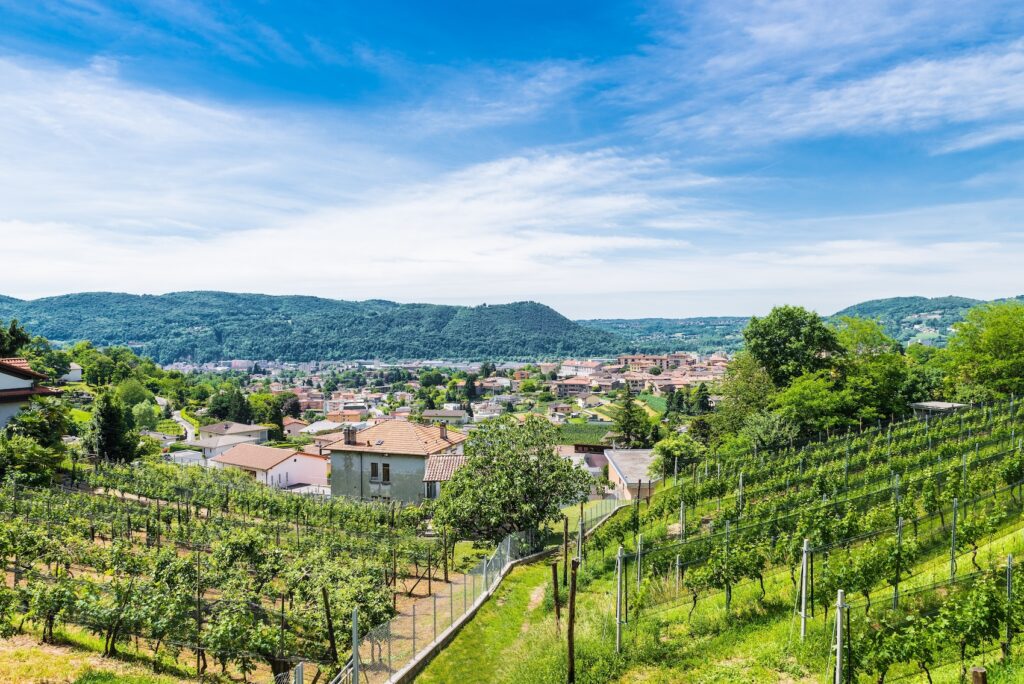Historic Swiss grape varieties to be protected
28th April 2023
The bondola and bondeletta varieties, which once played an important role in wine production in Ticino, Switzerland, are set to receive special protection.

Bondola varieties were an important part of Ticino’s wine production in the 1950s, before more profitable varieties were introduced and the native vines declined significantly. Image: Vineyards in Chiasso, Ticino canton, Switzerland (stock photo for illustration only).
Slow Food, a global network that aims to stop the disappearance of local food cultures and traditions, will protect and promote the two varieties under a Presidium project.
Bondola and bondoletta are grown in the Sopraceneri area of Ticino and the Mesolcina area of the Grisons in Switzerland. Only producers who make wine using 100% bondola and bondoletta grapes can join the Slow Food Presidium.
Until the 1950s bondola played an important part in Ticino’s wine production, having been considered to have interesting oenological qualities at the start of the 20th century.
Around 50% of production was red wine made from local varieties, with the most predominant being bondola. However, the gradual introduction of the more profitable merlot began in the 1920s and eventually led to a significant decline in the native vines.
Bondola and bondoletta are the only native varieties still being produced in Ticino, but cover just 1.5% of the surface under vine. The rest of the region is dominated by just a few international varieties, mainly merlot, which accounts for 82% of the wine-growing area.
Bondoletta is a very rare vine whose genetic analysis has shown it is a cross between bondola and completer (a variety that originated in the Alpine arc, probably from the Valais and Grisons).
DNA testing has revealed that bondola has no links to the typical varieties of northern Italy, but has the same genotype as briegler, another variety that is almost extinct but formerly grown in Switzerland.
The future of bondola and bondoletta
The protective project includes single-variety bondola, while bondoletta is not specifically mentioned as it is considered to be directly related to bondola.
“I’m very happy and proud to see the conclusion of almost two years of work,” said Claudio Poretti, the spokesperson for the Bondola Community and a member of the Slow Food Canton Ticino Convivium.
Creating the Slow Food Presidium involved first forming the Bondola Community, bringing together five producers, an agronomist, two Slow Food Alliance cookes and other stakeholders.
“In the coming years we want to give new impetus to bondola and bondoletta with various initiatives, including the planting of two new vineyards with bondola vine shoots by two of our producers.”
The project’s members want to preserve quality production and safeguard a unique ecosystem, so they are committed to reducing the use of plant protection products and copper-based substances while moving towards organic production. They prioritise the use of recyclable, biodegradable and compostable materials to reduce the ecological impact of their packaging.
The Slow Food Presidium project supports quality food production at risk of extinction, protects unique places and ecosystems, revives traditional processing methods and safeguards native breeds and local plant varieties. Today, almost 650 Presidia involve over 14,000 producers around the world.
View the full list of wine and grape variety Presidia in the world.
